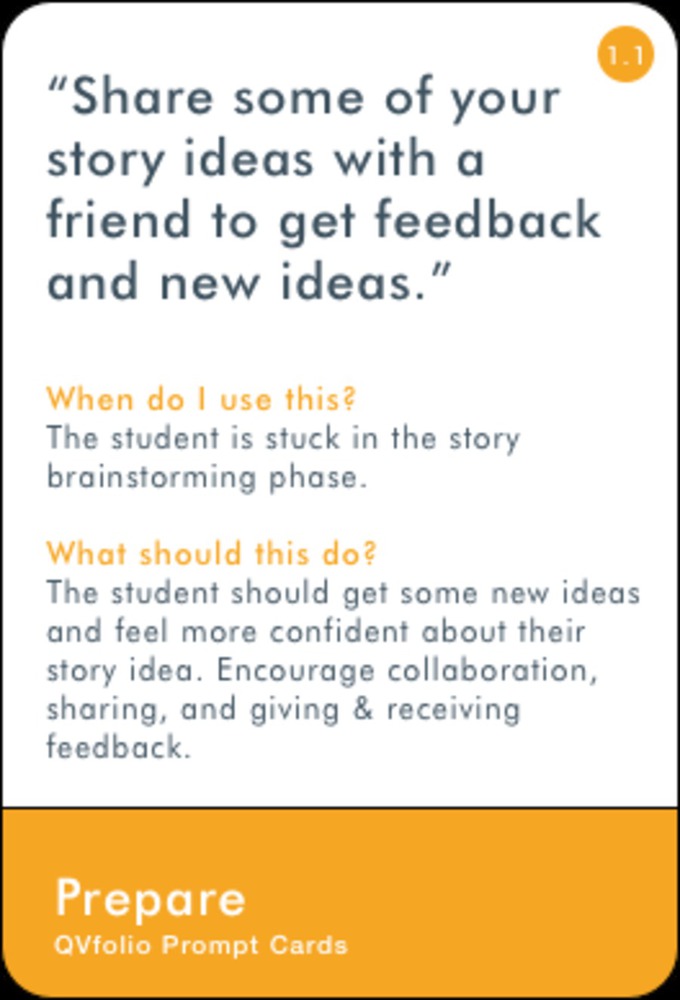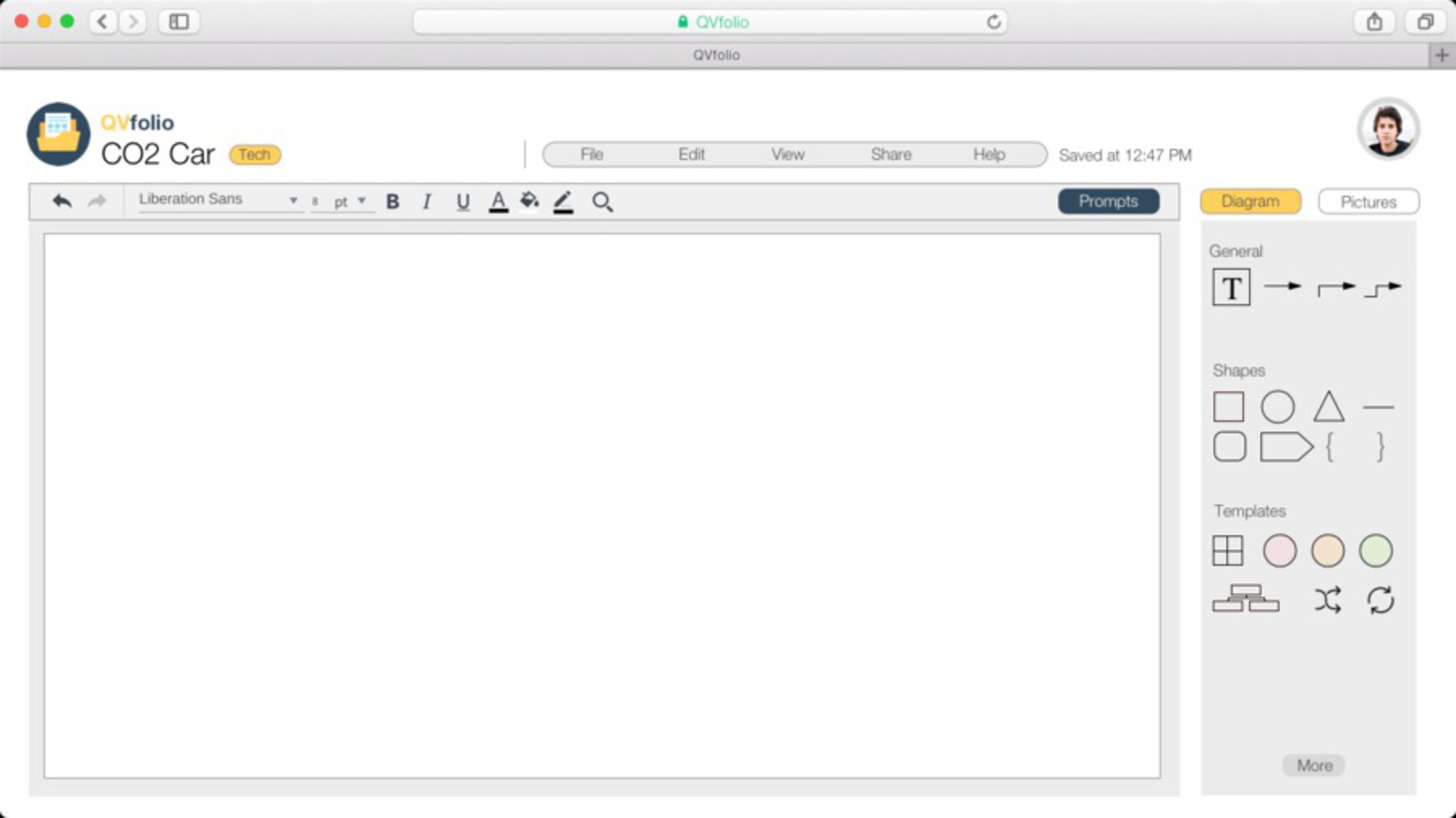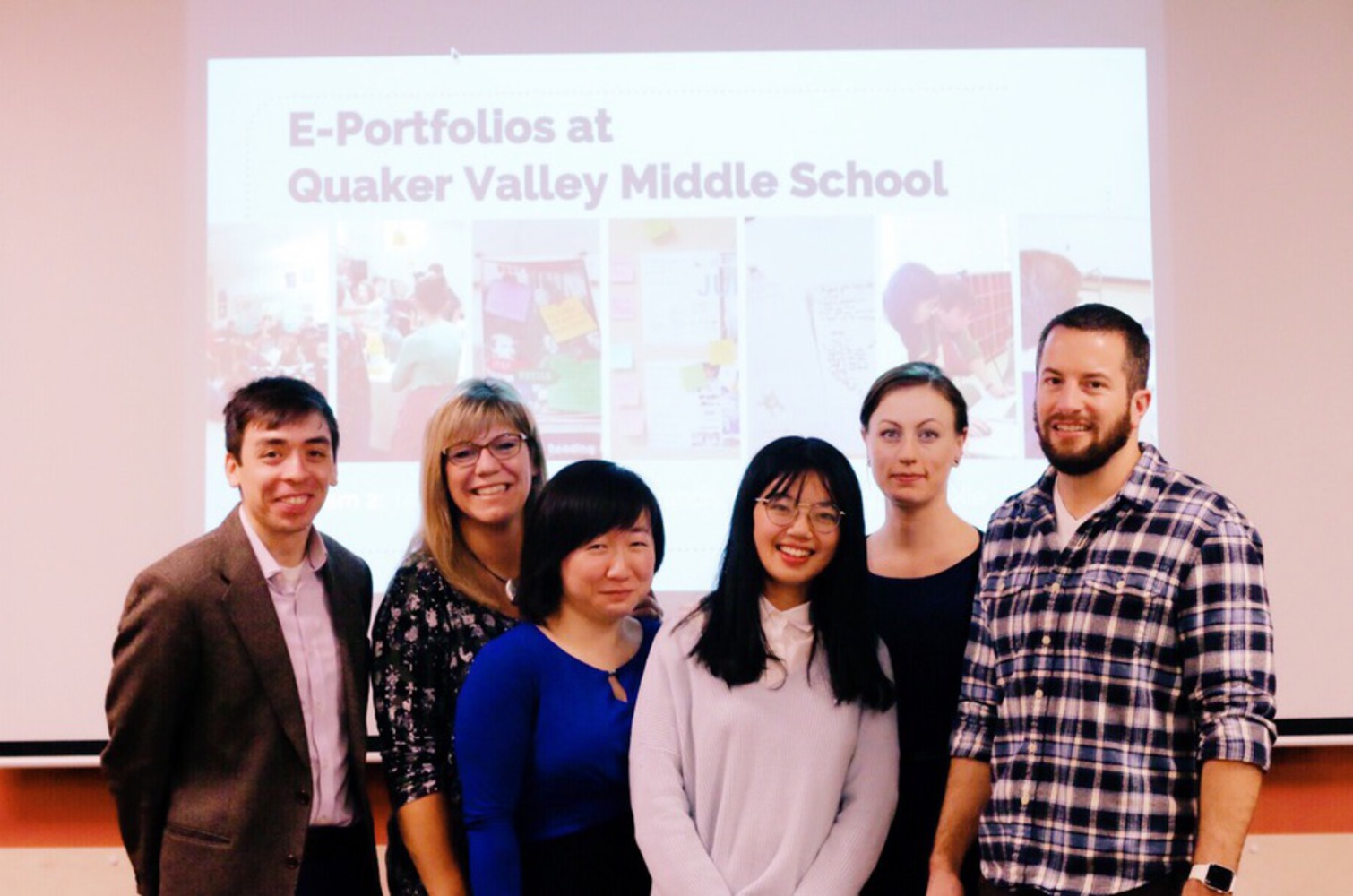Introduction & Open Portfolio Problem Statement
Students often leave school with little more than memories, grades, and some products of their coursework (such as essays and completed projects) to refer to later. Quaker Valley Middle School (QVMS) wants to change this by helping students create e-portfolios that make their thinking visible, so students, parents, and teachers alike can refer to and reflect upon students’ learning over the years.
Maker Ed Open Portfolio Project
The use of open portfolios aligns with the needs and challenges of the Quaker Valley School District and the Project Zero initiative they have undertaken. Through a Q&A session with Stephanie Chang from Maker Ed and our analysis of the Maker Ed Research Brief Series, we became acclimated to the challenges of using open portfolios. Those that resonated with us throughout this project include challenges to the technical ease and timing of documentation, motivating and guiding students through the documentation process, and helping stakeholders - students, parents, and teachers - find value in capturing and sharing their learning process.
Open Portfolios at QVMS
Although the 8th grade English Language Arts teacher and 6th-8th grade Technology Education teacher we worked with at Quaker Valley Middle School have unique classroom cultures and cover very different subject areas, they shared similar needs and challenges related to the student e-portfolio.
The teachers we worked with are forward-thinking and have a clear grasp on the goals for their classroom. However, they are challenged to help students make their learning visible, because their students lack an efficient documentation and organization process that empowers them to “own” their learning. Our partner teachers’ needs and values focus on: making thinking visible, student autonomy and ownership of the portfolio, and a simple, seamless, and student-friendly portfolio experience.
Problem Statement: QVMS is looking to create a seamlessly integrated & easy-to-use portfolio experience where students take ownership of the documentation, curation, sharing, and self-reflection of their work to ultimately showcase their learning, interests, and accomplishments over time.



